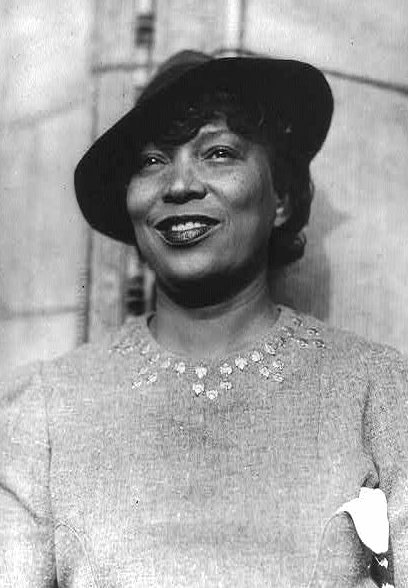 |
| Zora Neale Hurston- American Author (1935) By: Author unknown Source: Wikimedia Commons |
Hurston's story "Sweat" depicts an abusive and selfish husband, Sykes. Delia, Sykes wife, has taken physical, emotional, and verbal abuse from Sykes for more than 15 years. Sykes treats his wife as a petulant teenager treats his mother: with little respect, but still expecting to be fully taken care of. Certainly, Sykes has some sort of mother-complex, even preferring big women to the skinny Delia. Though his mistress is described in an unflattering light ("a hunk uh liver wid hair on it"), it could be that Sykes finds bigger women attractive because he associates soft curves with a maternal figure.
Sykes is financially dependent upon his wife (since all he does with his own wages is gamble) and that makes him angry, angry enough to want to punish Delia, and even kill her. Though Delia's situation is not a happy one, it is not a rare one either. Any man is capable of the darkness found in Sykes. During the story, the other men in town describe the sort of man they believe Sykes to be: "There's plenty men dat takes a wife lak dey do a joint uh sugar-cane. It's round, juicy an' sweet when dey gits it. But dey squeeze an' grind, squeeze an' grind an' wring tell dey wring every drop uh pleasure dat's in 'em out. When dey's satisfied dat dey is wrung dry, dey treats 'em jes lak dey do a cane-chew. Dey throws em away." Many men, whether they are black, white, Asian or Hispanic, can treat women just as Sykes treats Delia.
All the same, Delia does seem somewhat stuck in her situation because of her race. The men in town gossip about Delia and Sykes, fully aware of how he has beat her for their entire marriage. Not one of the gossipers mentions aiding Delia, or calling the police on her behalf. The one thing that works as a temporary deterrent against Sykes is when Delia threatens to call "the white folks" on him. Would Delia have felt as helpless against an abusive husband had her character been white? I think so. Any woman who takes physical abuse for fifteen years might feel as though she had no other option but to take the abuse for the remainder of her marriage. However, this warrants repeating: Delia does seem somewhat stuck in her situation because of her race.



